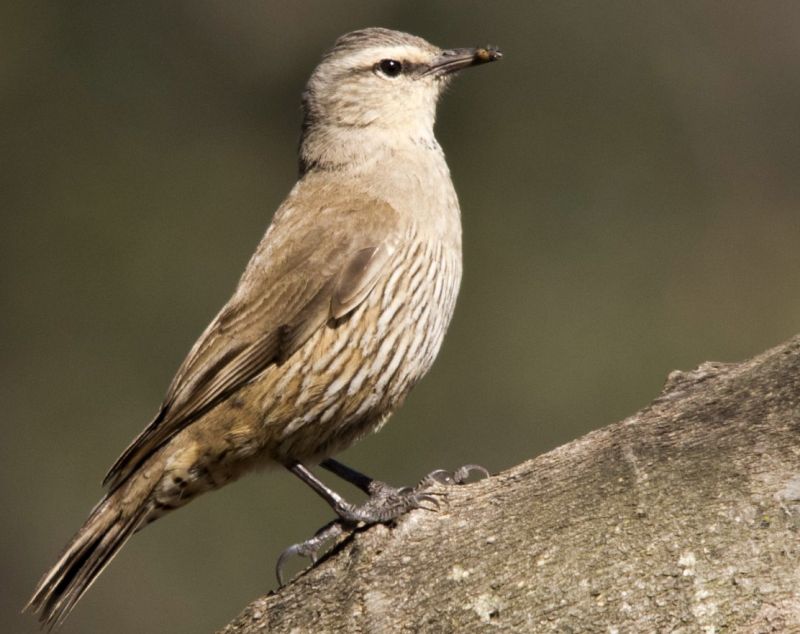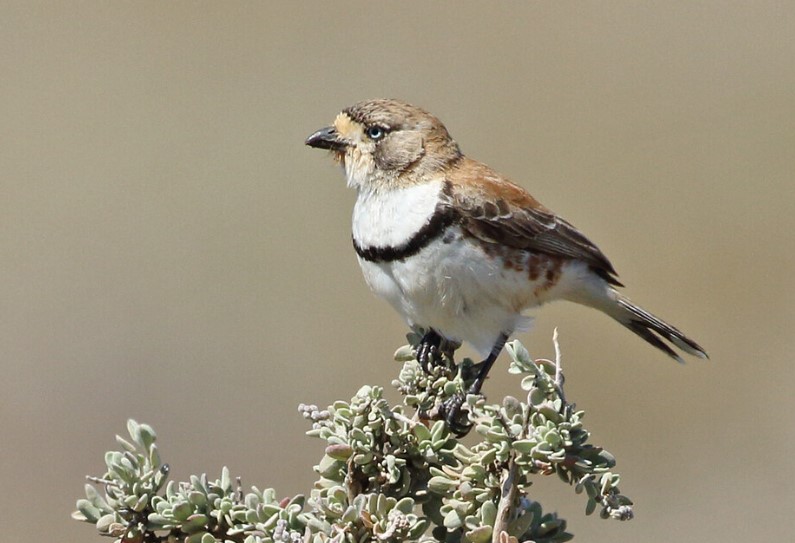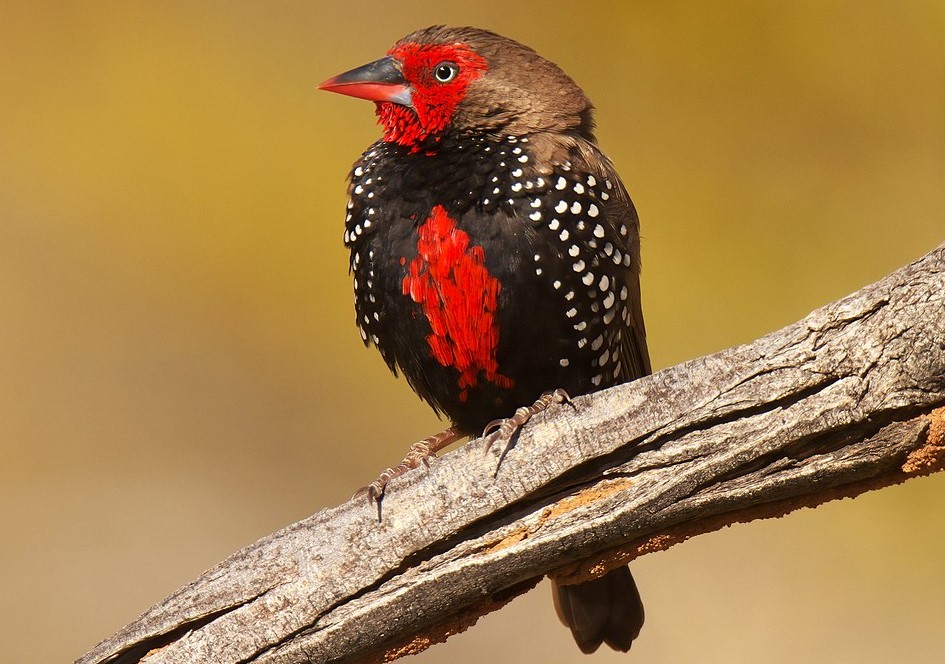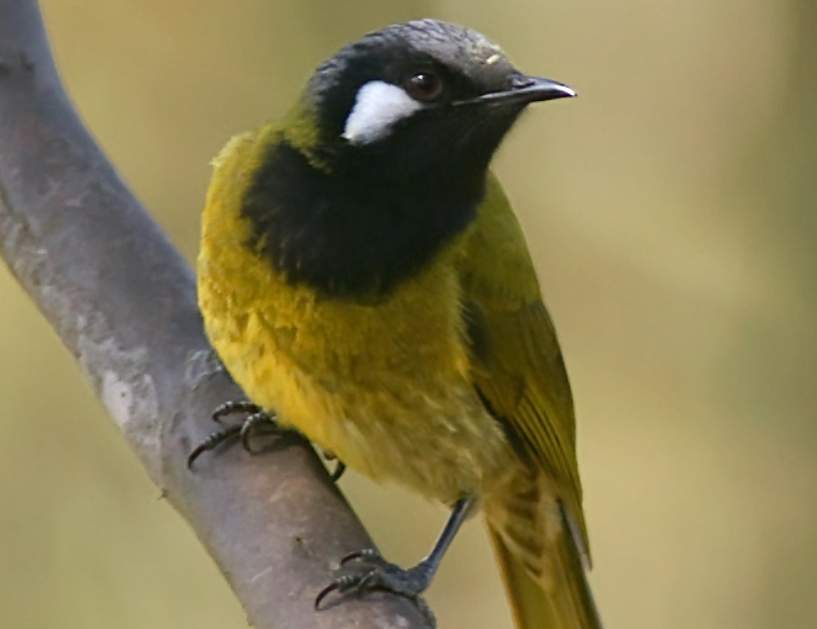Habitat: The arresting staccato calls of the Brown Treecreeper (Climacteris picumnus) are characteristic of eastern Australia’s eucalypt woodlands, mallee, and drier open forests. Brown treecreepers, the largest of their group, overlap the ranges of the white-throated and red-browed treecreepers, (Climacteris erythrops) even living with them in the same thicket.
Brown Treecreeper nonetheless keeps to more open woodland with much open ground and fallen timber, benefiting from clearing by man. Brown treecreepers are communal and sedentary. Pairs or groups of three to six hold to the same large territory of about five to 10 hectares year-round and spend about half their foraging time feeding-hopping, one foot in front of the other, in the litter on open ground.
They turn over leaves and debris, work over fallen logs, and spiral up tree trunks as well, pecking and probing cracks, crevices, and peeling bark for food—beetles, bugs, and larvae, but mainly ants. On stiffly whirring wings punctuated with planning glides, they fly low between points, constantly in contact and calling. If flushed from the ground, they fly to a tree or stump.
Moreover, rapid machine gun-like alarm churnings are given whenever the birds mob potential predators or nest robbers, such as snakes. Each local group comprises a breeding pair and one or two subordinate males. When the breeding is near, the pre-mating displays are given by the dominant male. Facing the female as she crouches with quivering wings, he bows back and forth in front of her before sidling behind to mount, still bowing.
The northernmost populations of Brown Treecreepers at the foot of Cape York Peninsula are rather small and dusky-backed and have higher-pitched calls than those to the south; they were once regarded as a separate species, the Black Treecreeper. They are similar to Browns in other aspects of their biology; they are now treated the same as Browns because they intergrade southwest of Townsville.
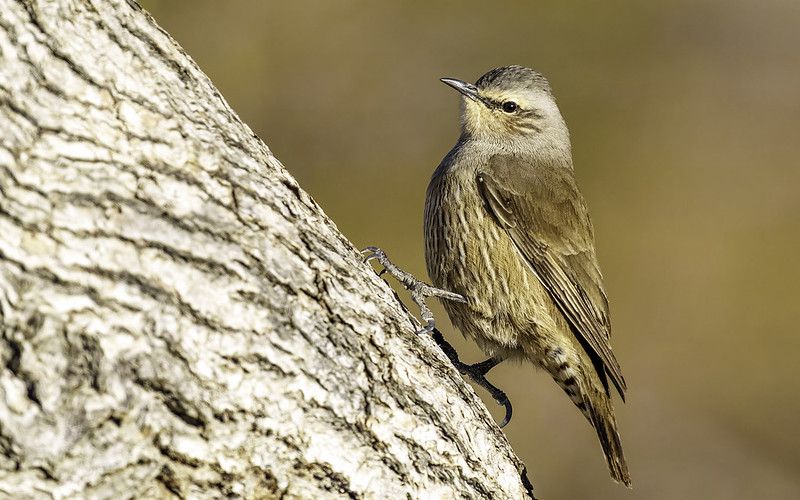
Identification: MALE: The upper parts are plain earth-brown, grey on the crown and neck. Wings are gray-brown with a pale buff band across the flight feathers. The tail is earth-brown, with a broad black subterminal band on all but the central pair of feathers. Eyebrows and face are pale sandy-buff.
The lores are dusky; the ear coverts are streaked brown and buff. The throat is off-white grading to cream-buff on the upper breast; the center of the lower throat is freckled black; the lower breast, flanks, and belly are pale buff-brown streaked finely dusky and white; the undertail is buff-white with broken black bars. The eyes are brown. The bill and feet are dusky. The Black Treecreeper (race melanota) is similar below but uniformly dusky black above; the tail band is obscured. Eyebrow, throat, and cheeks are creamy white, contrasting sharply with a blackish crown and line of through eyes.
The female bird is slightly smaller, with rufous freckles instead of black in the center of the lower throat, often hidden. The immature bird is dark brown above with a grey head, including eyebrows; the throat of males is white, bordered below with black markings; flanks, belly, and undertail coverts are washed rufous.
Vocalization: The Brown Treecreeper call consists of a single, strident, staccato whistle, Spink, with a slight upward inflection, often repeated in contact. Machine gun-like churring or chatter in alarm. Juveniles give adult contact notes, but they are even higher-pitched. Brown Treecreeper’s song includes a succession of slightly falling notes, followed by rising rattles or canary-like whistles (often from different birds); also a rapid series of 6–10 piping whistles repeated at short intervals (a pre-mating call).
Nesting and Breeding: All males join in building the nest, feeding the incubating female, and caring for the young. Some members of a group also attend other nests in adjacent territories—even on the same day. This reflects a relaxation of territoriality when young birds are present. After becoming independent breeders, some birds continue to tend to nest in their natal territory. The young birds may be fed not only by their parents but also by their older siblings and occasionally unrelated birds.
Nesting and breeding occur in June–December, earlier inland and later near the coast. Nest in a cup of dried grass, bark, and dung. The nest is usually lined with fur, feathers, or plant down and placed on a hollow limb or trunk 1-3 meters up, sometimes as high as 12-15 meters or more. Fence-post holes are often used.
Eggs: The bird lays 2 to 3 eggs; pale pink, densely spotted, and blotched with red-brown and underlying lavender; oval, about 23 x 18 mm. The incubation period is 16–17 days for females. Young fledged in 24-26 days but were often forced to leave as early as 20 days.
Distribution: Brown Treecreeper is found in eucalypt woodland and drier open forest, including ma/lee and river gum galleries inland throughout the eastern mainland, west to Mt Lofty-Flinders Ranges and Coopers Creek, South Australia, and north to the foot of Cape York Peninsula, Queensland, with local pockets north to the foot of Cape
Races: There are two intergrading races: one dusky-backed north of Townsville and Hughenden; the other brown everywhere else.
Threats: Major threats include land clearing, habitat loss, fragmentation, the removal of fallen timber and other woody debris, as well as competition from exotic species such as the common starling for nesting hollows.
Alternative Names: It is also known as the Black Treecreeper, ‘Woodpecker’.
Size: The Brown Treecreeper is about 160–180 mm long.
Order: Passeriformes
Family: Climacteridae
Species: C. picumnus
Genus: Climacteric
Domain: Eukaryota
Kingdom: Animalia
Phylum: Chordata
Class: Aves
Read More – Black-tailed Treecreeper (Climacteris melanura)
